Hair Transplant
Hair Transplant
- What is Hair Transplant?
- Who Might want to Get Hair Transplant?
- Who are the Right Candidates for Hair Transplant?
- How Should You Prepare for Hair Transplant?
- What Happens Before Hair Transplant Procedure?
- What Happens During Hair Transplant Procedure? How is Hair Transplant Done?
- What Happens After Hair Transplant Procedure?
- What is Hair Transplant Timeline?
- How Much Does Hair Transplant Cost?
- How Long is Hair Transplant Recovery Period?
- What are the Pros and Cons of Hair Transplant?
- Is Hair Transplant Painful?
- What is the Ideal Season for Hair Transplant?
- What are the Complications and Side Effects of Hair Transplant Surgery?
- How Long Does A Hair Transplant Last?
- What is the Best Age to Have a Hair Transplant?
- Does the Transplanted Hair Fall Out?
- Mens Hair Transplant Versus Hair Transplant Surgery Woman

&Quick Facts
-
Satisfaction 99%
-
 Reviews 100
Reviews 100 -
 Average Cost $ 2500
Average Cost $ 2500 -
 Related Doctors 1
Related Doctors 1 -
 Treatment Local Anesthesia
Treatment Local Anesthesia -
 Recovery Time 2-3 Weeks
Recovery Time 2-3 Weeks -
 Question&Answer 0
Question&Answer 0

It is the result of rhinoplasty performed by Emphair Hair Transplant Clinic. For reference purposes only, results may vary.
&Doctors
Most Active Doctors on NewMe
&Real Reviews
Most Popular Reviews
&Real Reviews
Real Reviews Q&A


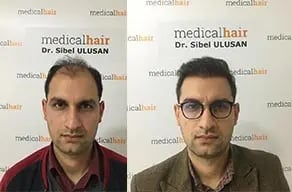



&All About Hair Transplant
&All About Hair Transplant
What is Hair Transplant?
Hair transplant is a surgical procedure where hair follicles are removed from one part of the scalp and implanted into small slits in areas experiencing hair loss.
It's a permanent solution for pattern baldness. Both men and women can experience hair loss due to various factors such as medical conditions, hormonal changes, stress, or aging.
Androgenetic alopecia, common in both genders, is linked to hormones and can start after puberty or menopause. Other types include alopecia areata, causing patchy hair loss, and cicatricial hair loss due to scarring. Traumatic alopecias result from hair styling practices.
Who Might want to Get Hair Transplant?
- People with male pattern baldness or female pattern baldness.
- People who experience hair loss due to head scarring, scalp injuries, or cosmetic surgery procedures.
- Those who need revision hair transplantation
- And those who will feel better after having a hair transplant
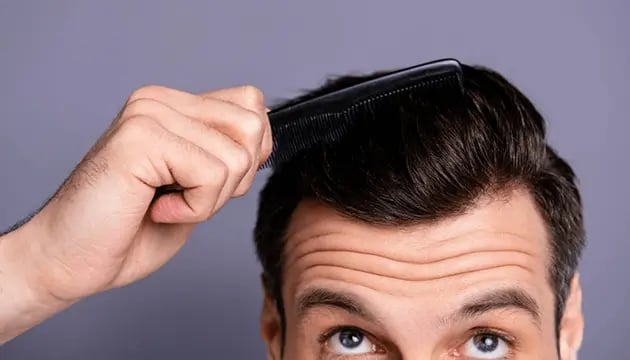
Who are the Right Candidates for Hair Transplant?
It's generally not recommended for individuals under 25 due to unrealistic expectations. Good overall health is essential, so those with conditions like diabetes, high blood pressure, or organ failure may not be suitable candidates.
The cause of hair loss also plays a role; stress-related hair loss may not benefit from a transplant, while male pattern baldness over several years makes for an ideal candidate.
Additionally, hair color, texture, and waviness can affect the transplant's outcome, and your surgeon will assess these factors during the consultation.
How Should You Prepare for Hair Transplant?
Alcohol and smoking should be avoided at least a week prior to surgery, as they can hinder the healing process. Discontinue blood-thinning medications to minimize bleeding risks during surgery.
Your doctor will provide specific instructions tailored to your needs, so follow them diligently for a successful procedure.
What Happens Before Hair Transplant Procedure?
The first of the criteria to be done before the hair transplant operation is examination and planning. The purpose of the first examination before hair transplantation; is to determine the cause of hair loss correctly and to determine the patient's needs correctly.
The first examination starts with a detailed anamnesis and anamnesis; It includes information such as the patient's age, chronic diseases, medications, smoking, alcohol use, allergy status and hair loss history.
Whether the patient is suitable for hair transplantation, how many grafts he will need, the hair transplantation plan is determined after the first examination, which is very important, and after the patient's entire history is investigated, appropriate treatment is performed.
Our mission is to create a world where every investment in modern beauty is Worth It.
Let's keep in touch
Get updates of the treatments you are interested
What Happens During Hair Transplant Procedure? How is Hair Transplant Done?
The donor area, where hair is harvested from, is trimmed short for easy access. Then, small sections of hair-bearing scalp are removed, divided into tiny grafts, and transplanted into recipient sites on the scalp. Normal saline is used to maintain skin strength and minimize bleeding.
The recipient area is also injected with saline to minimize bleeding and pain. Surgeons create tiny holes or slits in the recipient area following the direction of existing hair growth, where grafts containing one to three hairs are placed.
After grafting, the scalp is cleansed, covered with gauze, and sometimes wrapped with a pressure bandage for a day or two.
What Happens After Hair Transplant Procedure?
On the 3rd day after transplantation, you are taken from your hotel to the hospital and your first hair wash is done in the hospital and your instructions are given.
Doctor tells you what to watch out for. Most hair transplant centers ask you to stay in Turkey for 4 days and 3 nights and then you will be transferred to the airport.
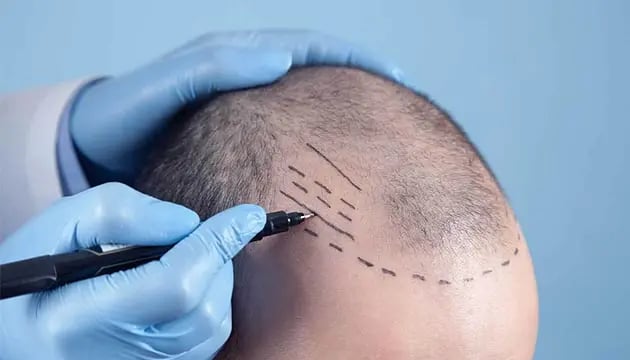
What is Hair Transplant Timeline?
On the day of surgery, local anesthesia is administered, and donor hair is harvested and transplanted into recipient sites. Post-operatively, patients may experience swelling and scabbing, followed by gradual hair growth over several months, with hair transplant results visible within 9-12 months.
How Much Does Hair Transplant Cost?
Worldwide hair transplant cost range differs from $25 to $30,000. In Turkey the average price per graft varies from $0.2 to $1. FUE techniques are used and the average cost is between $1000-$ 4000 (Us dollar) meanwhile the average cost worldwide is $7,500.

How Long is Hair Transplant Recovery Period?
After hair transplantation, the crust that binds to the area falls off within ten days. The redness and itching complaints encountered in the first stage disappear in a short time. After two to three months, a shock shedding phase is experienced.
After this completely normal process, the transplanted hair begins to grow. The completion of the hair transplant process takes approximately one year.
Following the information given to you by your doctor about the healing process after hair transplantation will ensure that the treatment reaches a permanent result.
The fact that the doctor performing the operation is an expert in the field plays a major role in the hair transplant recovery process.
Our mission is to create a world where every investment in modern beauty is Worth It.
Let's keep in touch
Get updates of the treatments you are interested
What are the Pros and Cons of Hair Transplant?
Pros:
- It provides successful results in cases where other hair loss treatments do not work.
- It is successful in the treatment of hair loss in large areas.
- Unlike other treatments, it can be applied even in the later stages of hair loss.
- You get natural looking hair.
- It is suitable for both men and women.
- After your hair starts to grow again, it does not fall out.
Cons:
- Long hair transplant process
- Cost
- Recovery time
- Scarring may remain (in general FUT operations and unsuccessful FUE operations)
- It takes a long time for new hair to grow
- The hair around the transplanted area may fall out after a while if it is not done in a specialist center.
Is Hair Transplant Painful?
After hair transplant surgery it will take a few days for the pain to subside which can be managed by painkillers.
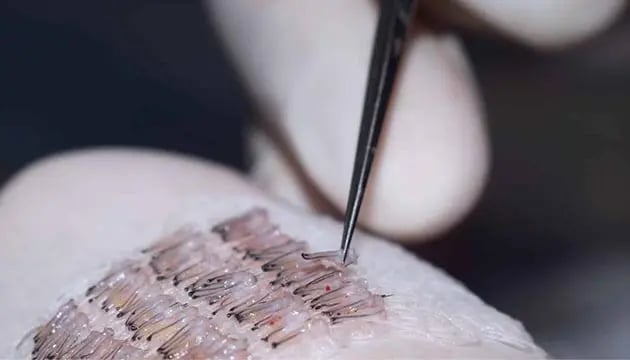
What is the Ideal Season for Hair Transplant?
If you are planning to get your hair transplant during summer time than; protect your head from UV lights. At least 10 days avoid direct sun lights. Cancel your swimming vacation for at least 15 days after the surgery.
What are the Complications and Side Effects of Hair Transplant Surgery?
The very first disadvantage of hair transplant procedure is the long waiting period. It takes around 3-4 months for the whole procedure to be completely done.
Secondly no one can give you guarantee that the surgery will match your expectations. You can get into a lot of problems as hair transplantation is a surgical procedure if you are not working with a qualified surgeon.
The hair transplant cost is another disadvantage of the surgery. The costs vary from person to person and it is quite expensive compared to other cosmetic treatments. Hair transplantation demands a lot of expenditure starting from the very beginning and even after the surgery ends.
Another disadvantage of hair transplantation is there exists many side effects run parallel during the treatment. Such as itching, pain, numbness, non-acceptance of a foreign tissue, etc.
Our mission is to create a world where every investment in modern beauty is Worth It.
Let's keep in touch
Get updates of the treatments you are interested
How Long Does A Hair Transplant Last?
DHT is the receptor that causes hair loss. The requirement of grafts is dependent on a number of factors such as age of the patient, grade of baldness, family history, condition of donor hair, etc..
You may not need an extra session if you protect your existing hair from further hair loss.
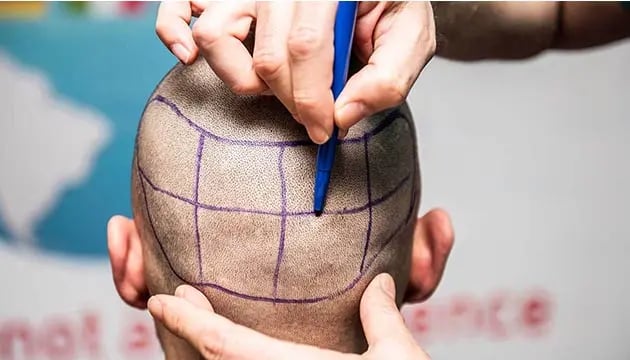
Does the Transplanted Hair Fall Out?
This occurrence is called “effluvium” or “shock loss”. Shock loss causes 80% to 95% of the hairs to fall out after that the follicles will lie dormant from three to eight months.
This is the unavoidable part of the hair restoration process and it is temporary. Although it can be disconcerting to see the hairs shed after a hair restoration procedure, try to remember that this is a good sign of progress.
Planted hairs need time to mature and will grow at different rates. The grafts will remain in the place they have been shifted to and in just a few short months, the follicles will revive from their dormant state and new hair will sprout.
Mens Hair Transplant Versus Hair Transplant Surgery Woman
Men typically experience hair loss in a specific pattern known as male pattern baldness, which often involves receding hairlines and thinning at the crown. On the other hand, women tend to experience hair loss more diffusely across the scalp, with thinning occurring all over rather than in specific patterns.
Therefore, hair transplant techniques for women may involve addressing larger areas of thinning rather than focusing on specific bald spots as often seen in men. Additionally, the quality and texture of hair may differ between men and women, influencing the approach taken during the transplant procedure.
What is Hair Transplant?
Hair transplant is a surgical procedure where hair follicles are removed from one part of the scalp and implanted into small slits in areas experiencing hair loss.
It's a permanent solution for pattern baldness. Both men and women can experience hair loss due to various factors such as medical conditions, hormonal changes, stress, or aging.
Androgenetic alopecia, common in both genders, is linked to hormones and can start after puberty or menopause. Other types include alopecia areata, causing patchy hair loss, and cicatricial hair loss due to scarring. Traumatic alopecias result from hair styling practices.
Who Might want to Get Hair Transplant?
- People with male pattern baldness or female pattern baldness.
- People who experience hair loss due to head scarring, scalp injuries, or cosmetic surgery procedures.
- Those who need revision hair transplantation
- And those who will feel better after having a hair transplant

Who are the Right Candidates for Hair Transplant?
It's generally not recommended for individuals under 25 due to unrealistic expectations. Good overall health is essential, so those with conditions like diabetes, high blood pressure, or organ failure may not be suitable candidates.
The cause of hair loss also plays a role; stress-related hair loss may not benefit from a transplant, while male pattern baldness over several years makes for an ideal candidate.
Additionally, hair color, texture, and waviness can affect the transplant's outcome, and your surgeon will assess these factors during the consultation.
How Should You Prepare for Hair Transplant?
Alcohol and smoking should be avoided at least a week prior to surgery, as they can hinder the healing process. Discontinue blood-thinning medications to minimize bleeding risks during surgery.
Your doctor will provide specific instructions tailored to your needs, so follow them diligently for a successful procedure.
What Happens Before Hair Transplant Procedure?
The first of the criteria to be done before the hair transplant operation is examination and planning. The purpose of the first examination before hair transplantation; is to determine the cause of hair loss correctly and to determine the patient's needs correctly.
The first examination starts with a detailed anamnesis and anamnesis; It includes information such as the patient's age, chronic diseases, medications, smoking, alcohol use, allergy status and hair loss history.
Whether the patient is suitable for hair transplantation, how many grafts he will need, the hair transplantation plan is determined after the first examination, which is very important, and after the patient's entire history is investigated, appropriate treatment is performed.
Our mission is to create a world where every investment in modern beauty is Worth It.
Let's keep in touch
Get updates of the treatments you are interested
What Happens During Hair Transplant Procedure? How is Hair Transplant Done?
The donor area, where hair is harvested from, is trimmed short for easy access. Then, small sections of hair-bearing scalp are removed, divided into tiny grafts, and transplanted into recipient sites on the scalp. Normal saline is used to maintain skin strength and minimize bleeding.
The recipient area is also injected with saline to minimize bleeding and pain. Surgeons create tiny holes or slits in the recipient area following the direction of existing hair growth, where grafts containing one to three hairs are placed.
After grafting, the scalp is cleansed, covered with gauze, and sometimes wrapped with a pressure bandage for a day or two.
What Happens After Hair Transplant Procedure?
On the 3rd day after transplantation, you are taken from your hotel to the hospital and your first hair wash is done in the hospital and your instructions are given.
Doctor tells you what to watch out for. Most hair transplant centers ask you to stay in Turkey for 4 days and 3 nights and then you will be transferred to the airport.

What is Hair Transplant Timeline?
On the day of surgery, local anesthesia is administered, and donor hair is harvested and transplanted into recipient sites. Post-operatively, patients may experience swelling and scabbing, followed by gradual hair growth over several months, with hair transplant results visible within 9-12 months.
How Much Does Hair Transplant Cost?
Worldwide hair transplant cost range differs from $25 to $30,000. In Turkey the average price per graft varies from $0.2 to $1. FUE techniques are used and the average cost is between $1000-$ 4000 (Us dollar) meanwhile the average cost worldwide is $7,500.

How Long is Hair Transplant Recovery Period?
After hair transplantation, the crust that binds to the area falls off within ten days. The redness and itching complaints encountered in the first stage disappear in a short time. After two to three months, a shock shedding phase is experienced.
After this completely normal process, the transplanted hair begins to grow. The completion of the hair transplant process takes approximately one year.
Following the information given to you by your doctor about the healing process after hair transplantation will ensure that the treatment reaches a permanent result.
The fact that the doctor performing the operation is an expert in the field plays a major role in the hair transplant recovery process.
Our mission is to create a world where every investment in modern beauty is Worth It.
Let's keep in touch
Get updates of the treatments you are interested
What are the Pros and Cons of Hair Transplant?
Pros:
- It provides successful results in cases where other hair loss treatments do not work.
- It is successful in the treatment of hair loss in large areas.
- Unlike other treatments, it can be applied even in the later stages of hair loss.
- You get natural looking hair.
- It is suitable for both men and women.
- After your hair starts to grow again, it does not fall out.
Cons:
- Long hair transplant process
- Cost
- Recovery time
- Scarring may remain (in general FUT operations and unsuccessful FUE operations)
- It takes a long time for new hair to grow
- The hair around the transplanted area may fall out after a while if it is not done in a specialist center.
Is Hair Transplant Painful?
After hair transplant surgery it will take a few days for the pain to subside which can be managed by painkillers.

What is the Ideal Season for Hair Transplant?
If you are planning to get your hair transplant during summer time than; protect your head from UV lights. At least 10 days avoid direct sun lights. Cancel your swimming vacation for at least 15 days after the surgery.
What are the Complications and Side Effects of Hair Transplant Surgery?
The very first disadvantage of hair transplant procedure is the long waiting period. It takes around 3-4 months for the whole procedure to be completely done.
Secondly no one can give you guarantee that the surgery will match your expectations. You can get into a lot of problems as hair transplantation is a surgical procedure if you are not working with a qualified surgeon.
The hair transplant cost is another disadvantage of the surgery. The costs vary from person to person and it is quite expensive compared to other cosmetic treatments. Hair transplantation demands a lot of expenditure starting from the very beginning and even after the surgery ends.
Another disadvantage of hair transplantation is there exists many side effects run parallel during the treatment. Such as itching, pain, numbness, non-acceptance of a foreign tissue, etc.
Our mission is to create a world where every investment in modern beauty is Worth It.
Let's keep in touch
Get updates of the treatments you are interested
How Long Does A Hair Transplant Last?
DHT is the receptor that causes hair loss. The requirement of grafts is dependent on a number of factors such as age of the patient, grade of baldness, family history, condition of donor hair, etc..
You may not need an extra session if you protect your existing hair from further hair loss.
What is the Best Age to Have a Hair Transplant?
Does the Transplanted Hair Fall Out?
This occurrence is called “effluvium” or “shock loss”. Shock loss causes 80% to 95% of the hairs to fall out after that the follicles will lie dormant from three to eight months.
This is the unavoidable part of the hair restoration process and it is temporary. Although it can be disconcerting to see the hairs shed after a hair restoration procedure, try to remember that this is a good sign of progress.
Planted hairs need time to mature and will grow at different rates. The grafts will remain in the place they have been shifted to and in just a few short months, the follicles will revive from their dormant state and new hair will sprout.
Mens Hair Transplant Versus Hair Transplant Surgery Woman
Men typically experience hair loss in a specific pattern known as male pattern baldness, which often involves receding hairlines and thinning at the crown. On the other hand, women tend to experience hair loss more diffusely across the scalp, with thinning occurring all over rather than in specific patterns.
Therefore, hair transplant techniques for women may involve addressing larger areas of thinning rather than focusing on specific bald spots as often seen in men. Additionally, the quality and texture of hair may differ between men and women, influencing the approach taken during the transplant procedure.











